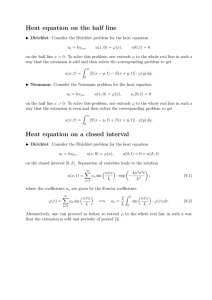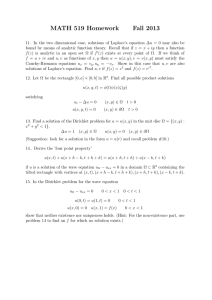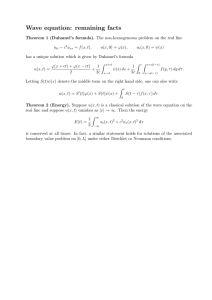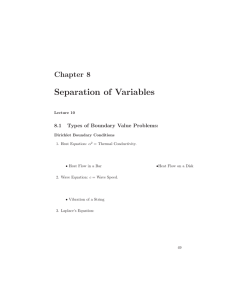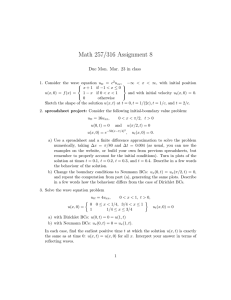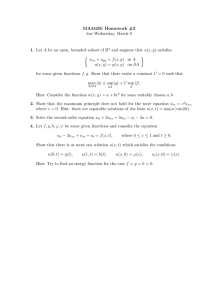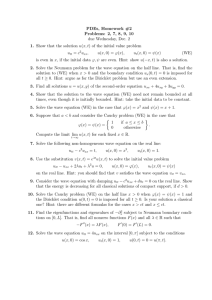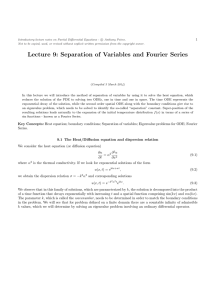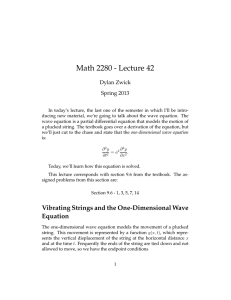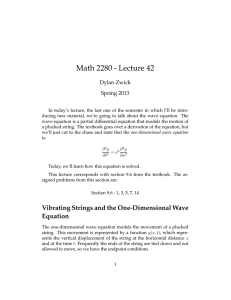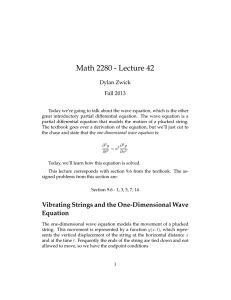Wave equation on the half line
advertisement
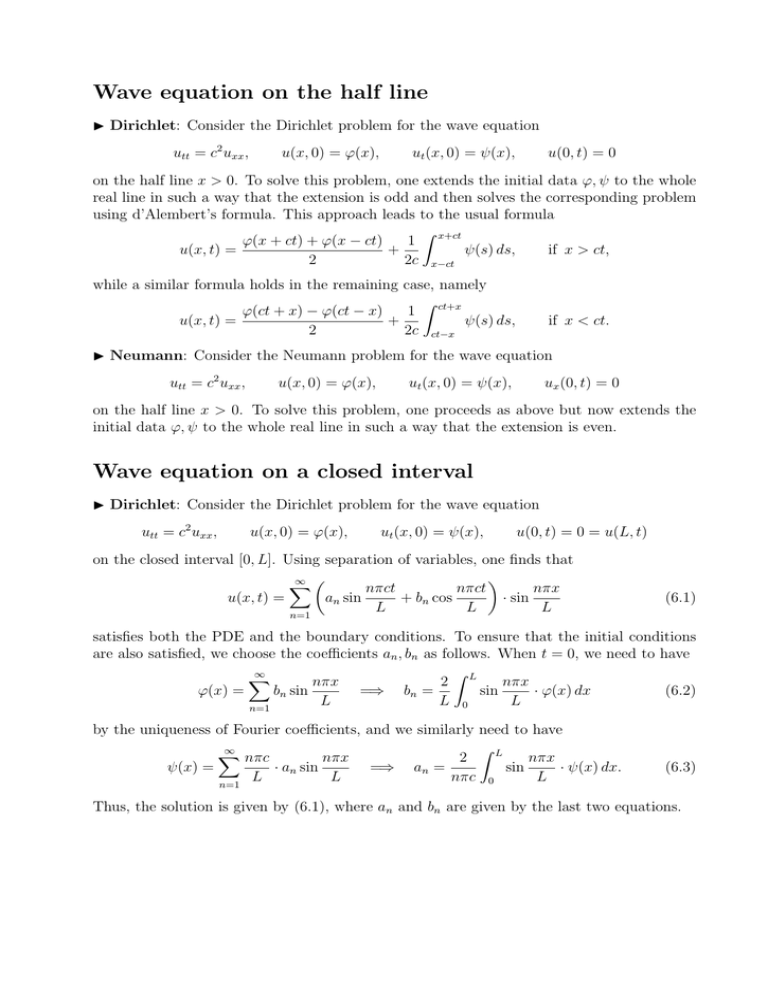
Wave equation on the half line I Dirichlet: Consider the Dirichlet problem for the wave equation utt = c2 uxx , u(x, 0) = φ(x), ut (x, 0) = ψ(x), u(0, t) = 0 on the half line x > 0. To solve this problem, one extends the initial data φ, ψ to the whole real line in such a way that the extension is odd and then solves the corresponding problem using d’Alembert’s formula. This approach leads to the usual formula ∫ φ(x + ct) + φ(x − ct) 1 x+ct u(x, t) = + ψ(s) ds, if x > ct, 2 2c x−ct while a similar formula holds in the remaining case, namely ∫ φ(ct + x) − φ(ct − x) 1 ct+x u(x, t) = + ψ(s) ds, 2 2c ct−x if x < ct. I Neumann: Consider the Neumann problem for the wave equation utt = c2 uxx , u(x, 0) = φ(x), ut (x, 0) = ψ(x), ux (0, t) = 0 on the half line x > 0. To solve this problem, one proceeds as above but now extends the initial data φ, ψ to the whole real line in such a way that the extension is even. Wave equation on a closed interval I Dirichlet: Consider the Dirichlet problem for the wave equation utt = c2 uxx , u(x, 0) = φ(x), ut (x, 0) = ψ(x), u(0, t) = 0 = u(L, t) on the closed interval [0, L]. Using separation of variables, one finds that ) ∞ ( ∑ nπct nπct nπx u(x, t) = an sin + bn cos · sin L L L n=1 (6.1) satisfies both the PDE and the boundary conditions. To ensure that the initial conditions are also satisfied, we choose the coefficients an , bn as follows. When t = 0, we need to have ∫ ∞ ∑ nπx 2 L nπx φ(x) = bn sin =⇒ bn = sin · φ(x) dx (6.2) L L 0 L n=1 by the uniqueness of Fourier coefficients, and we similarly need to have ∫ L ∞ ∑ nπc nπx 2 nπx ψ(x) = · an sin =⇒ an = sin · ψ(x) dx. L L nπc 0 L n=1 (6.3) Thus, the solution is given by (6.1), where an and bn are given by the last two equations.
